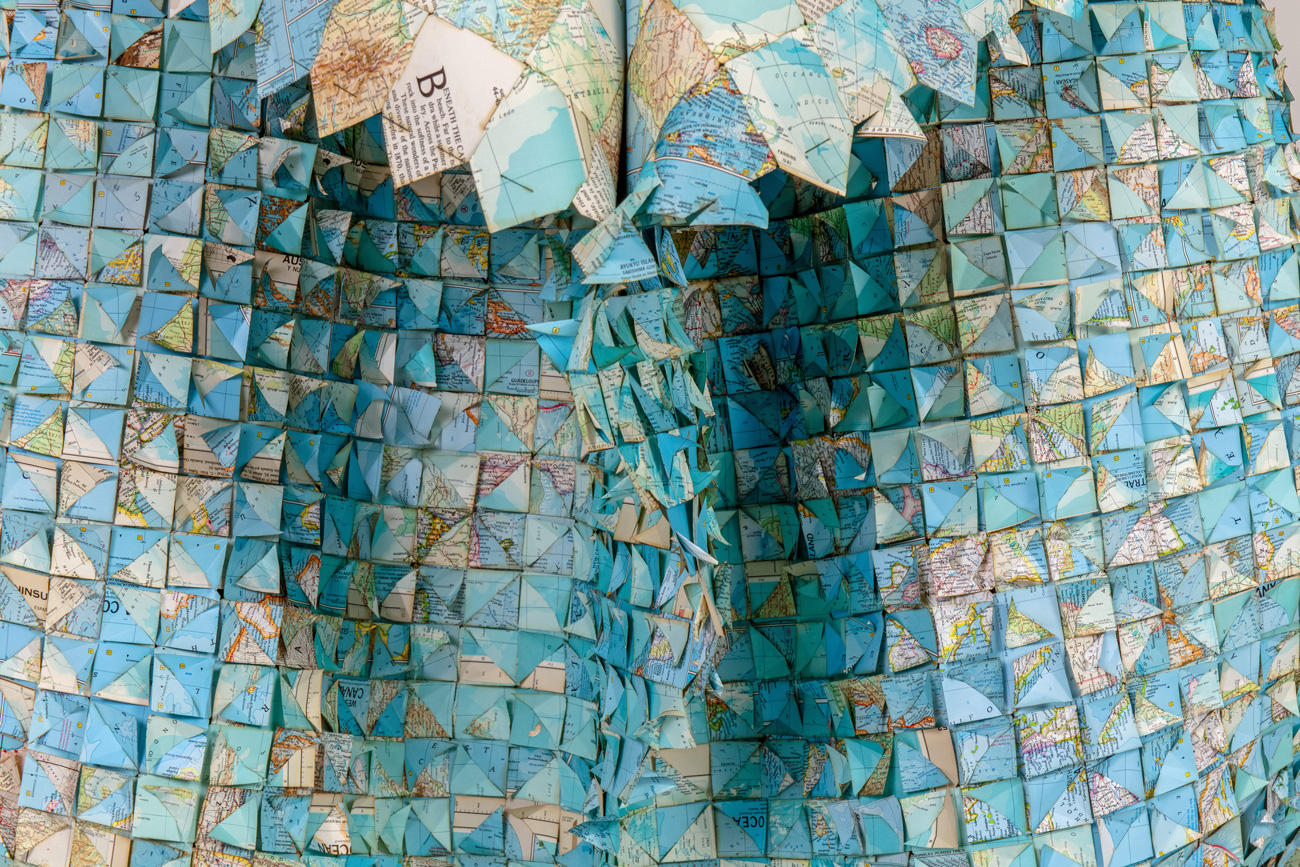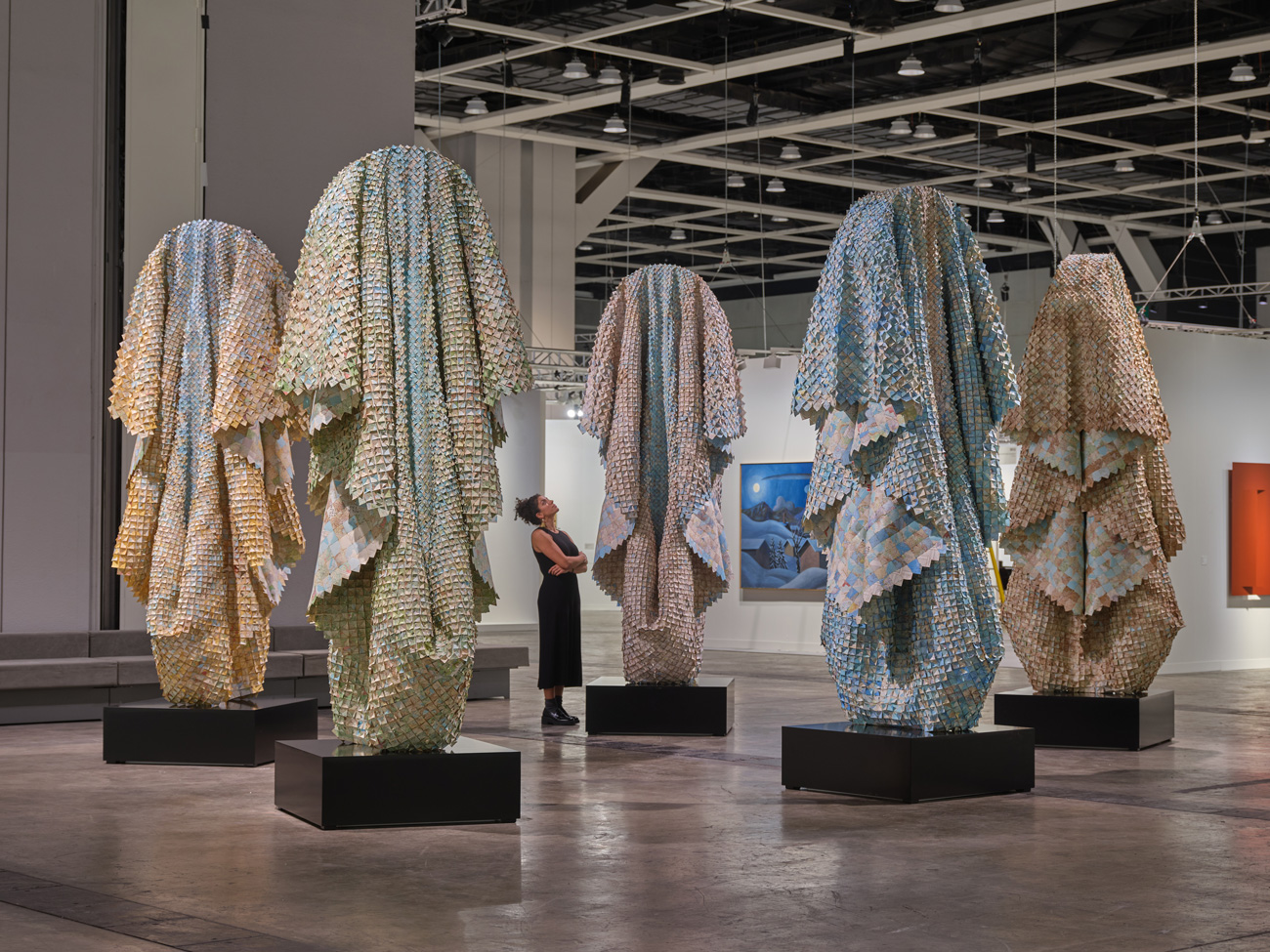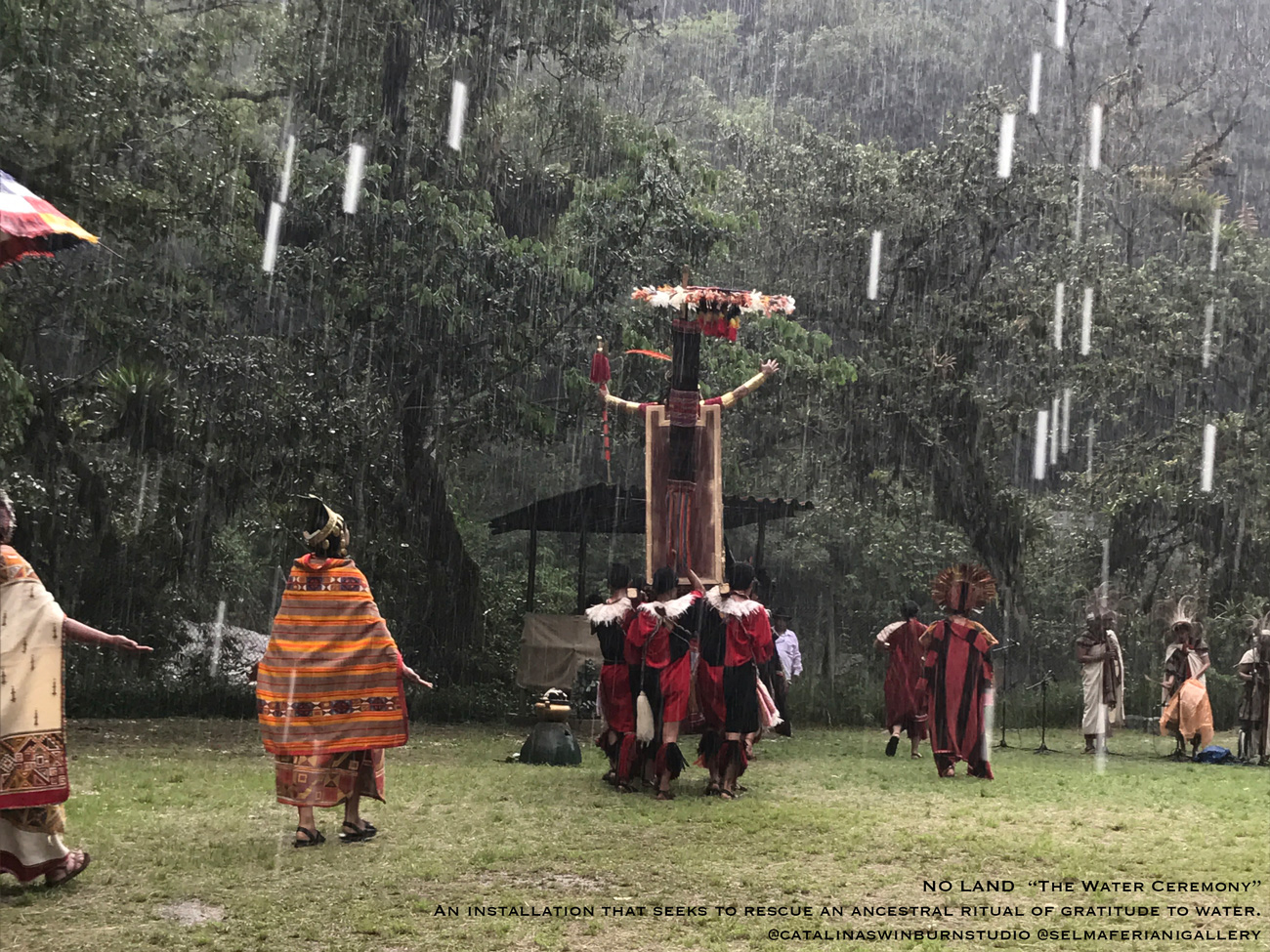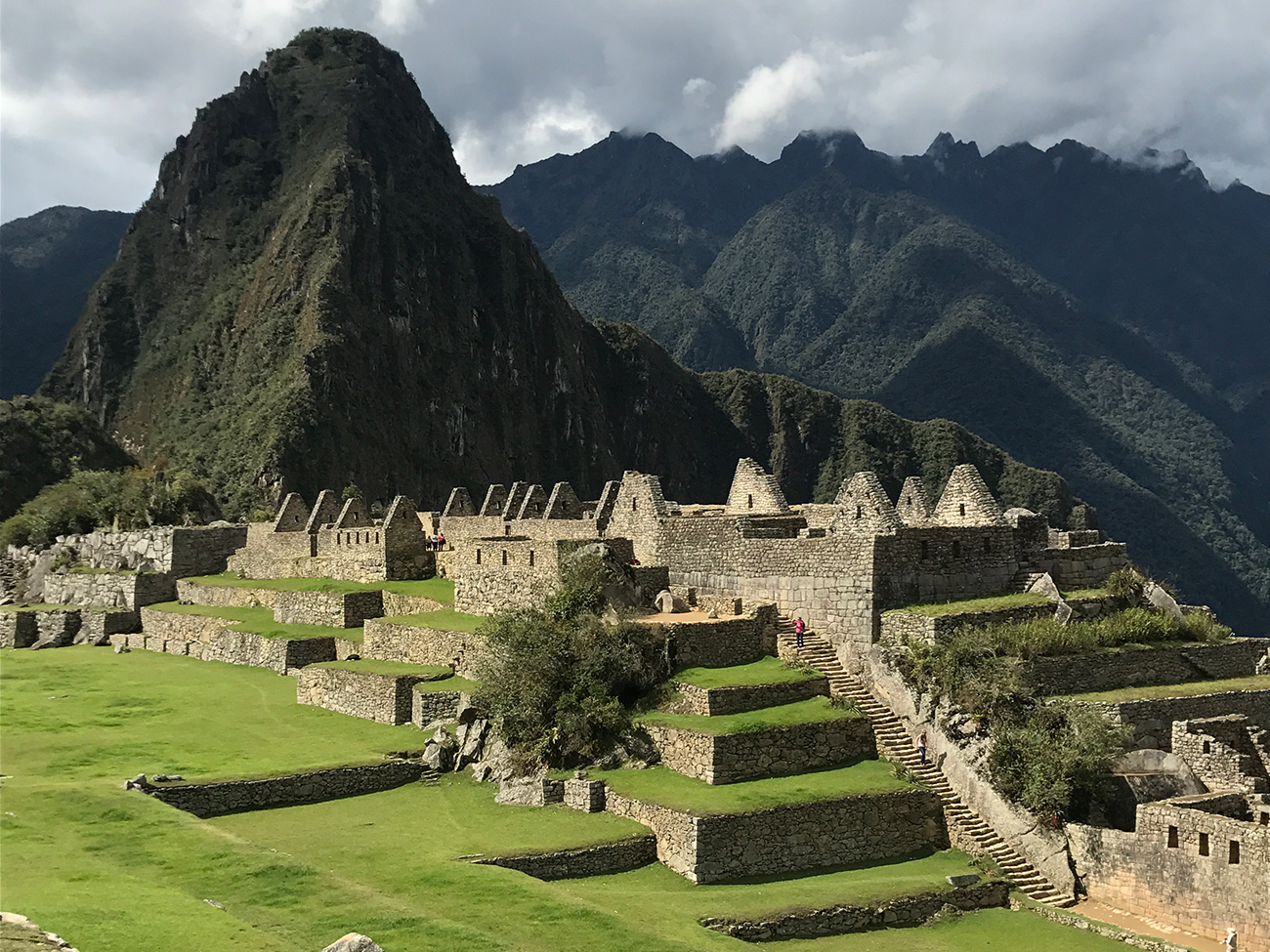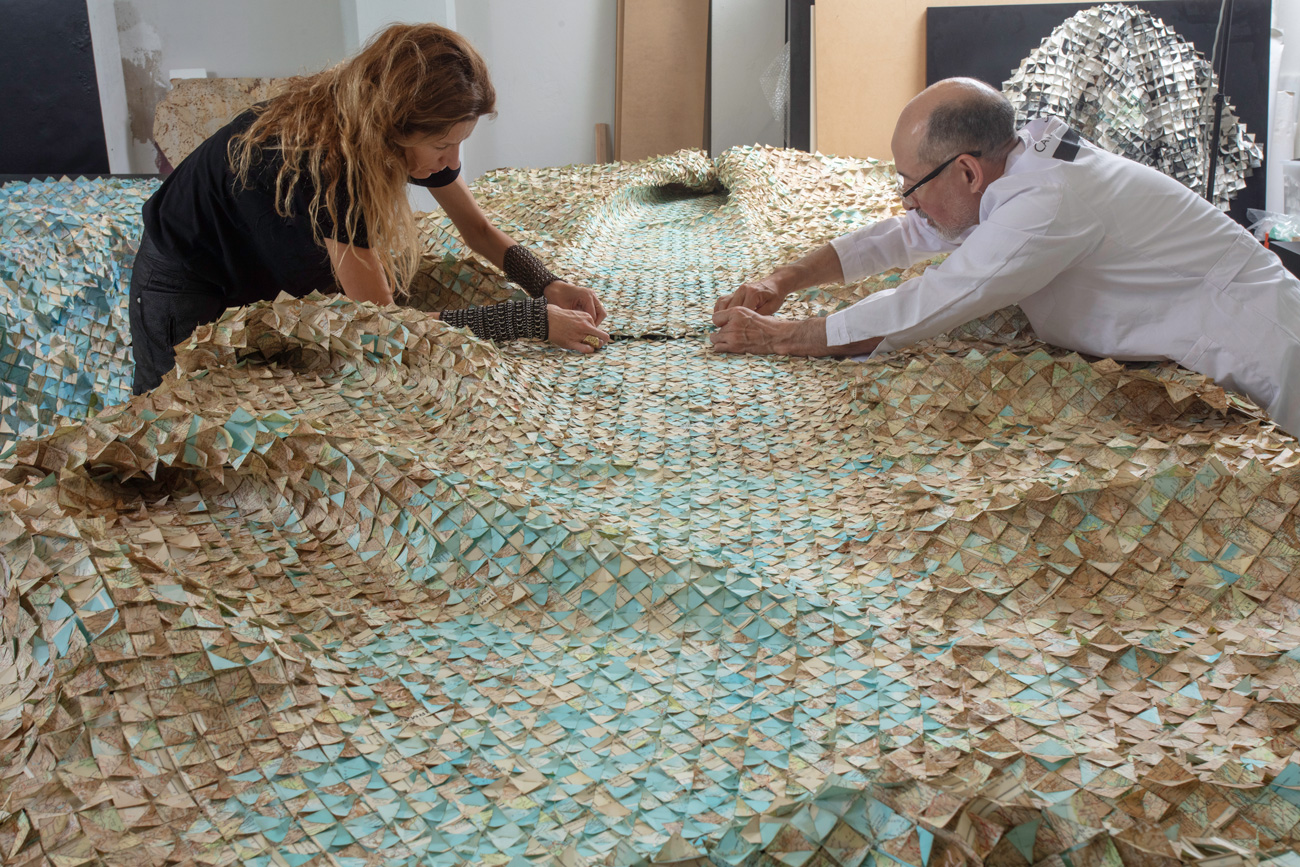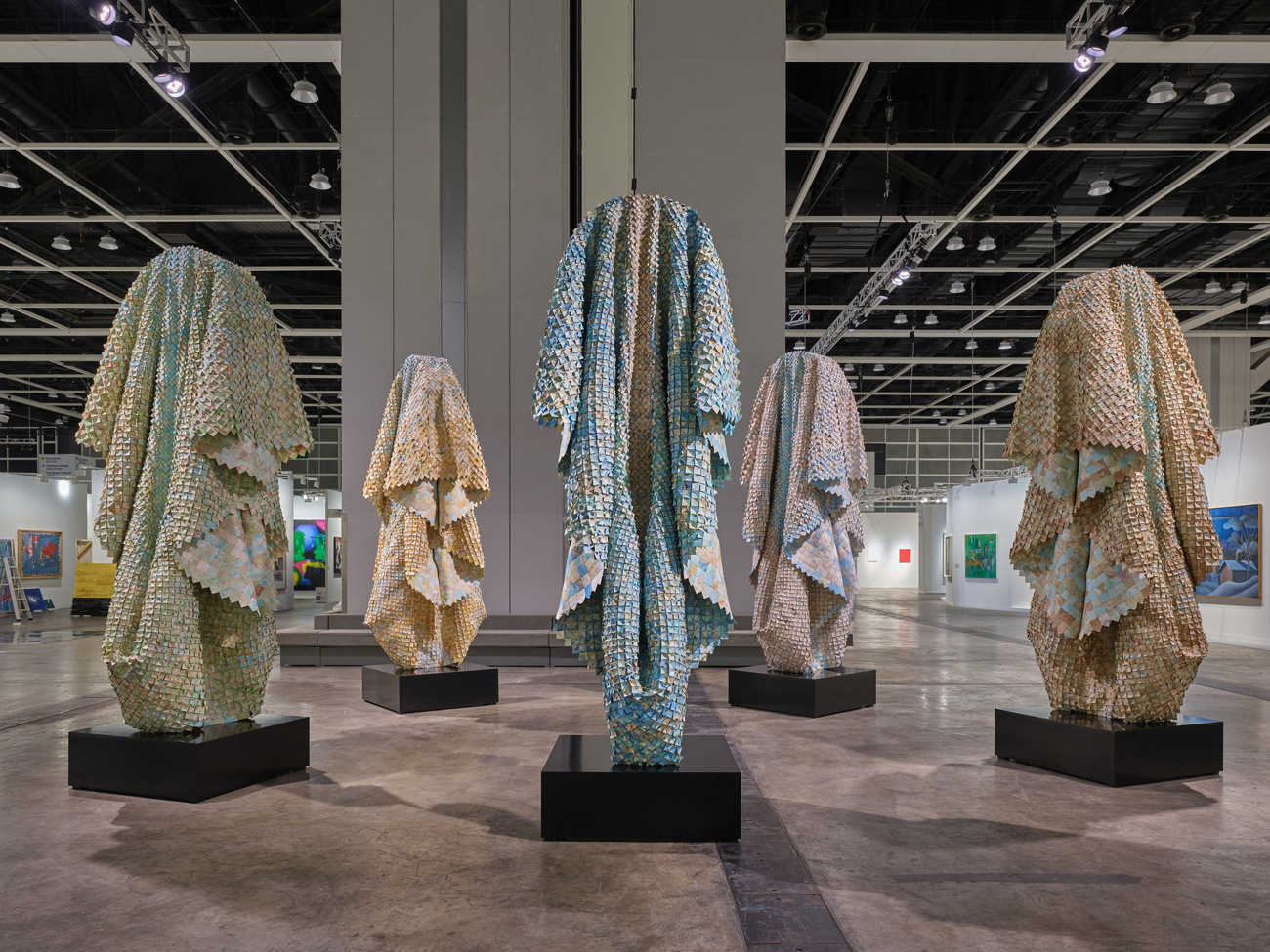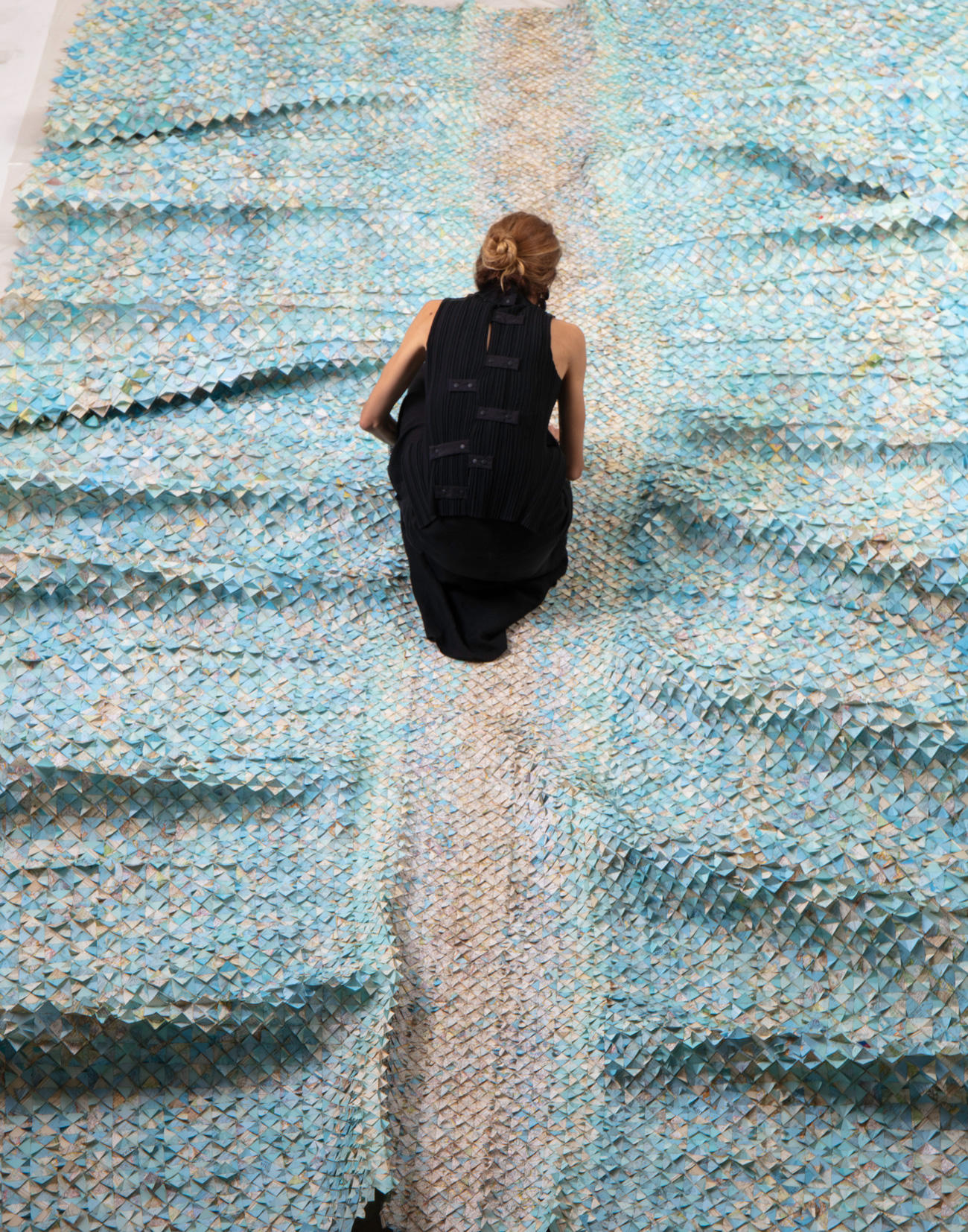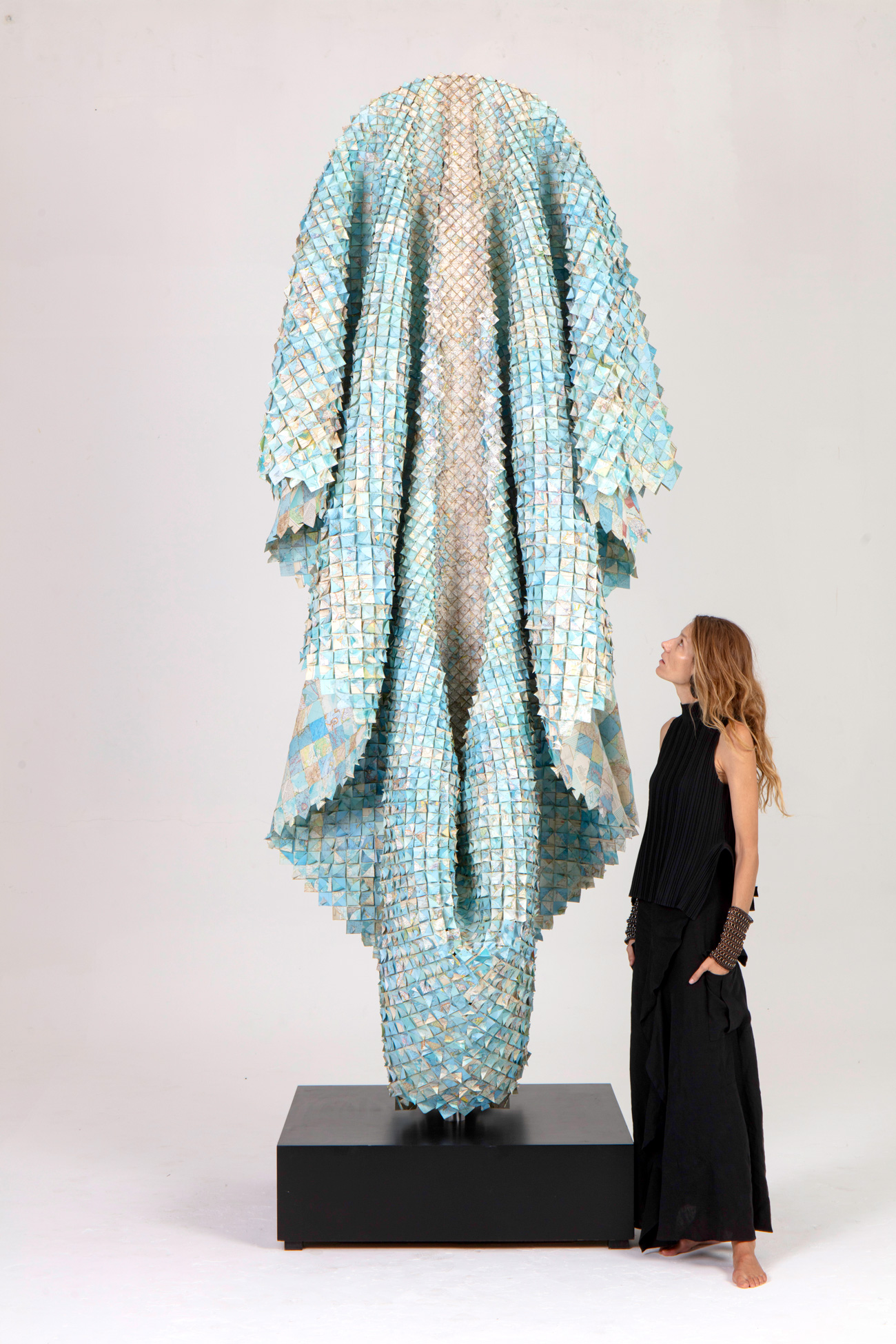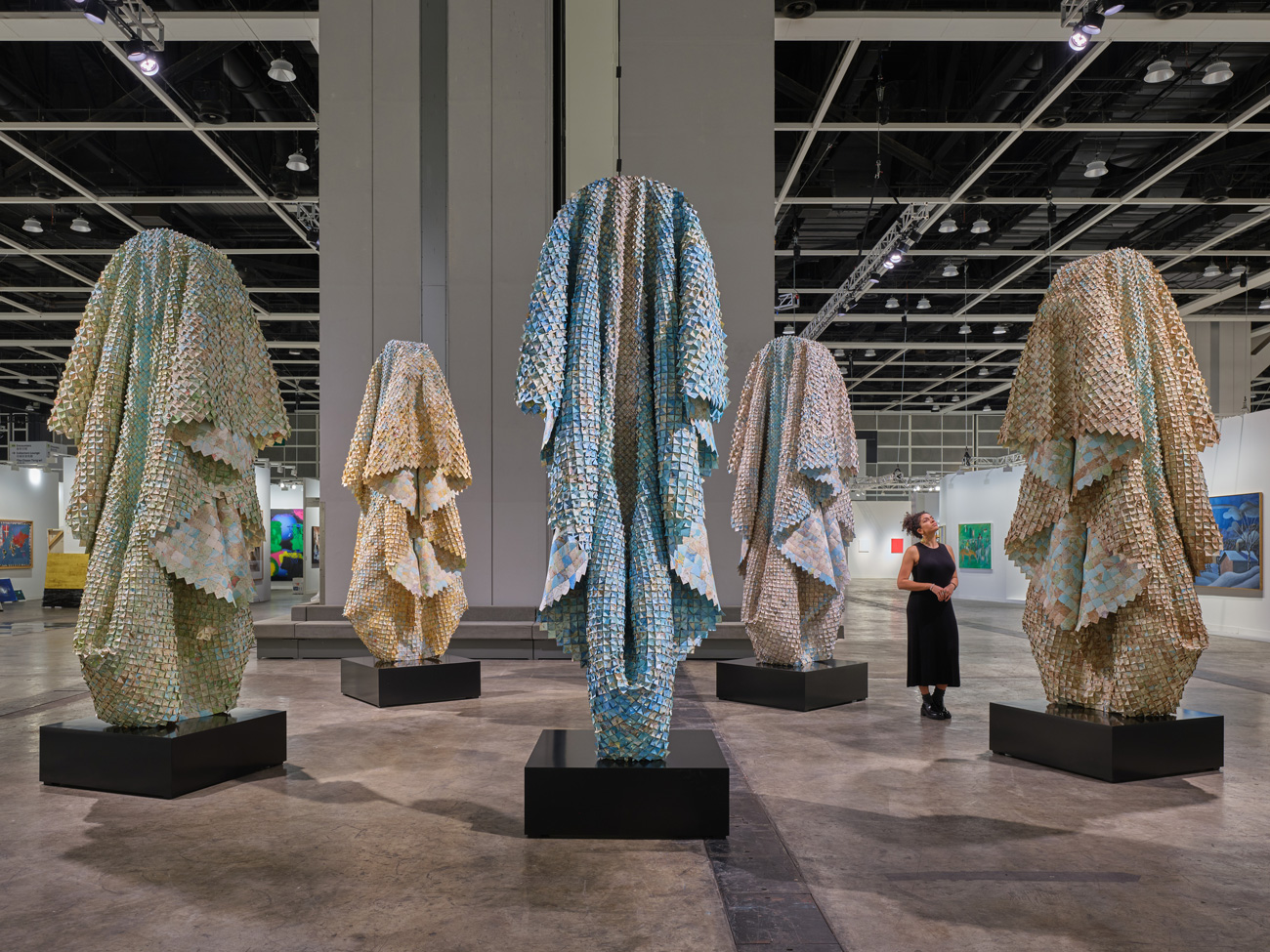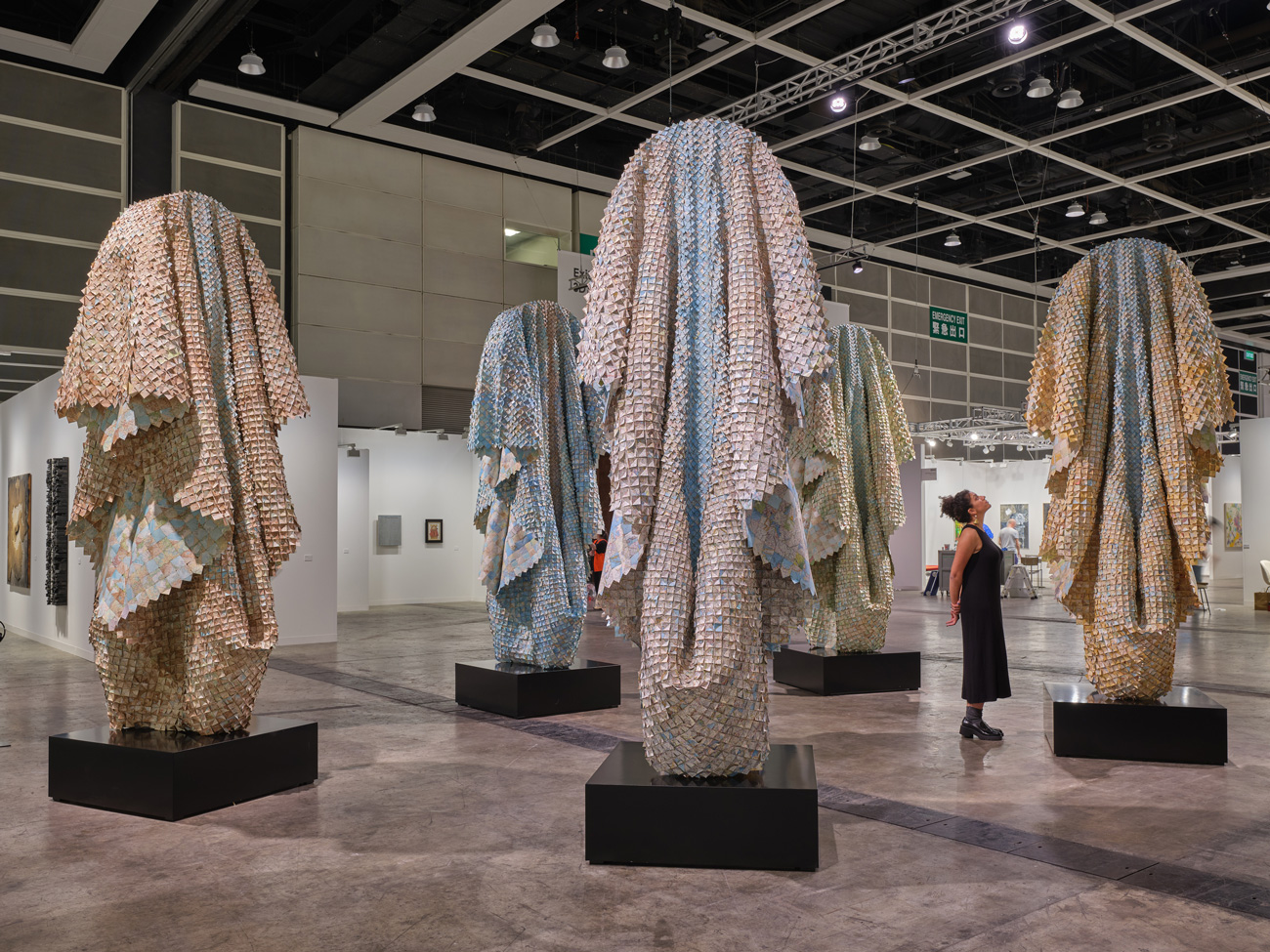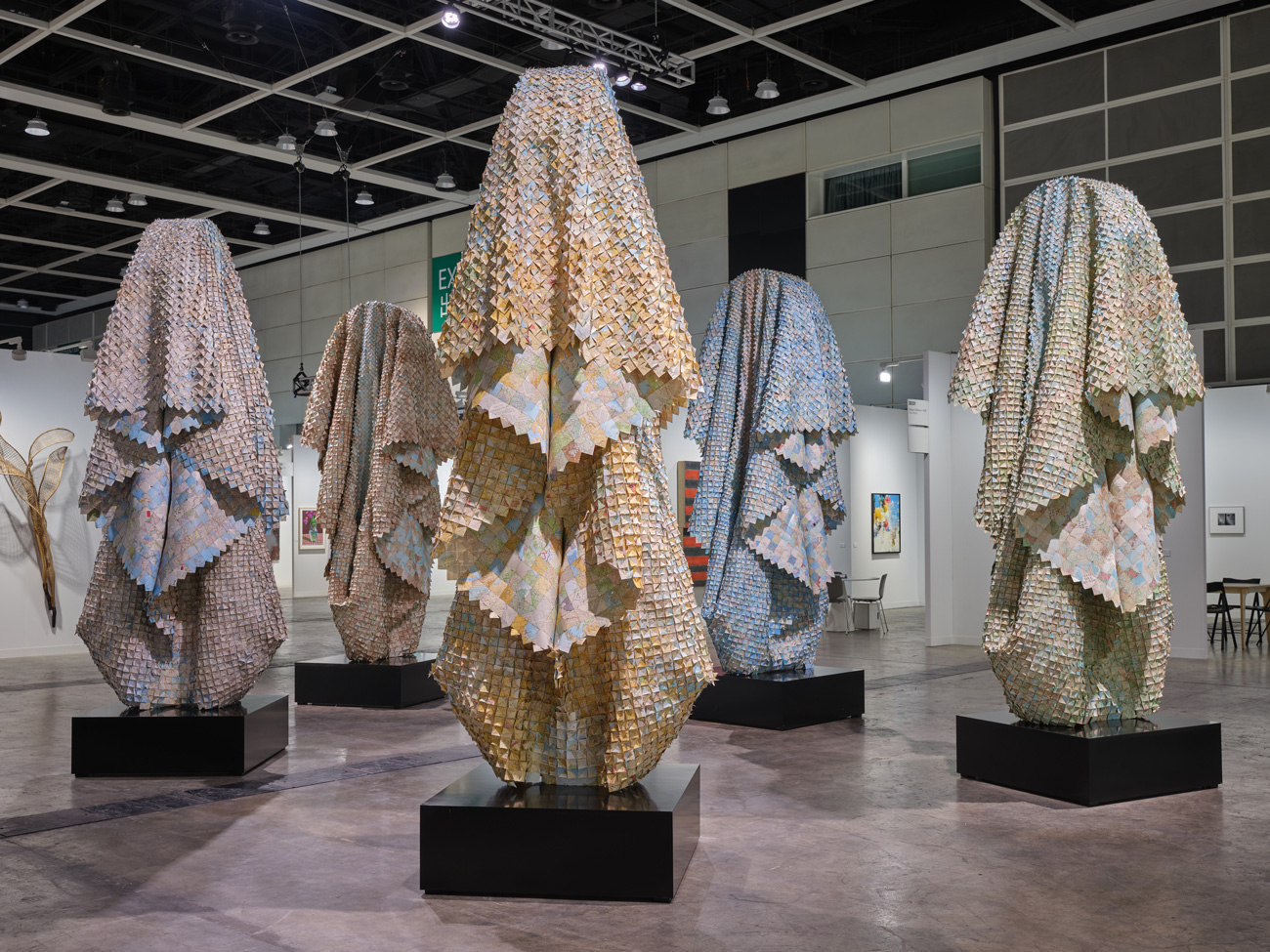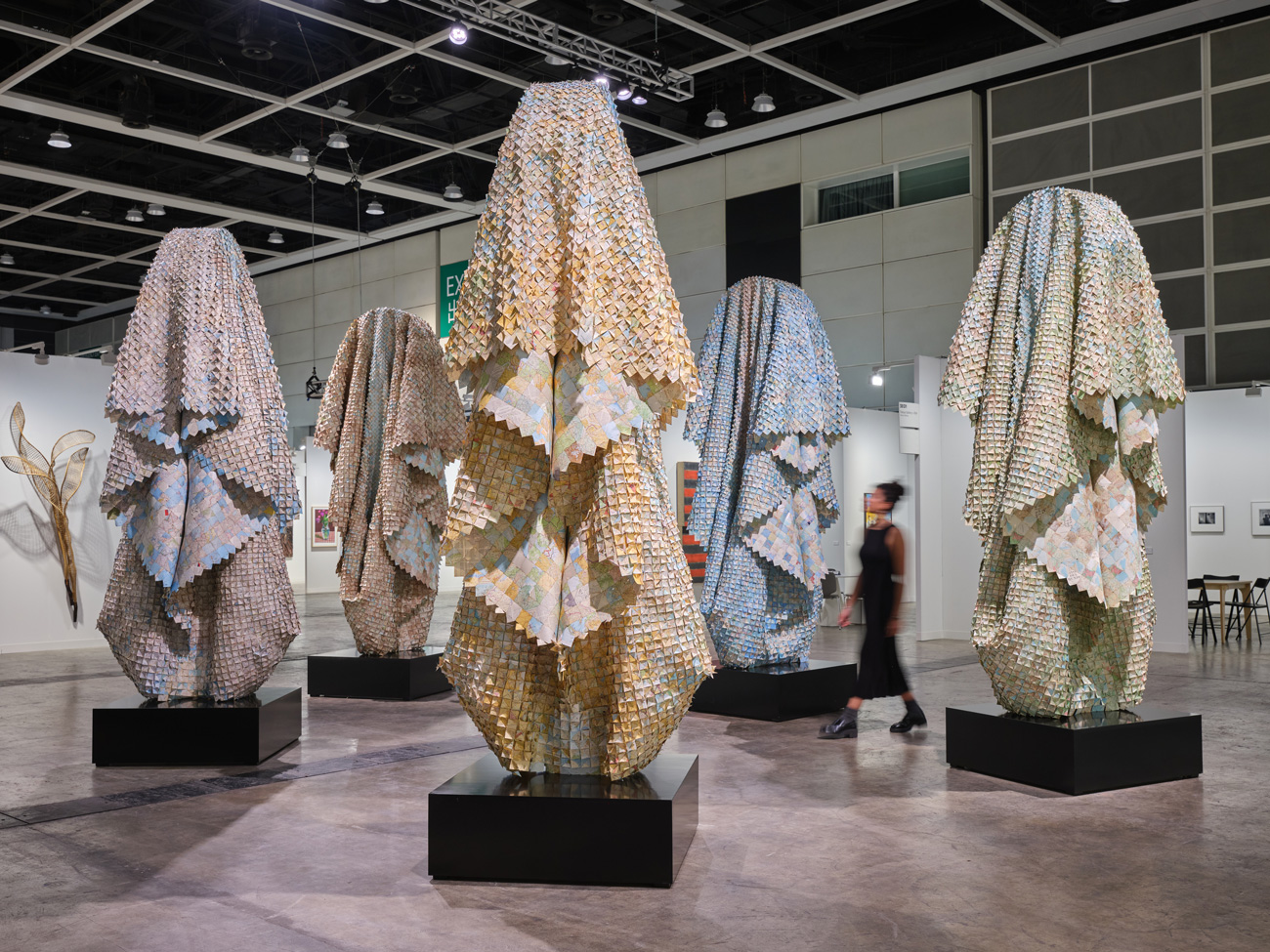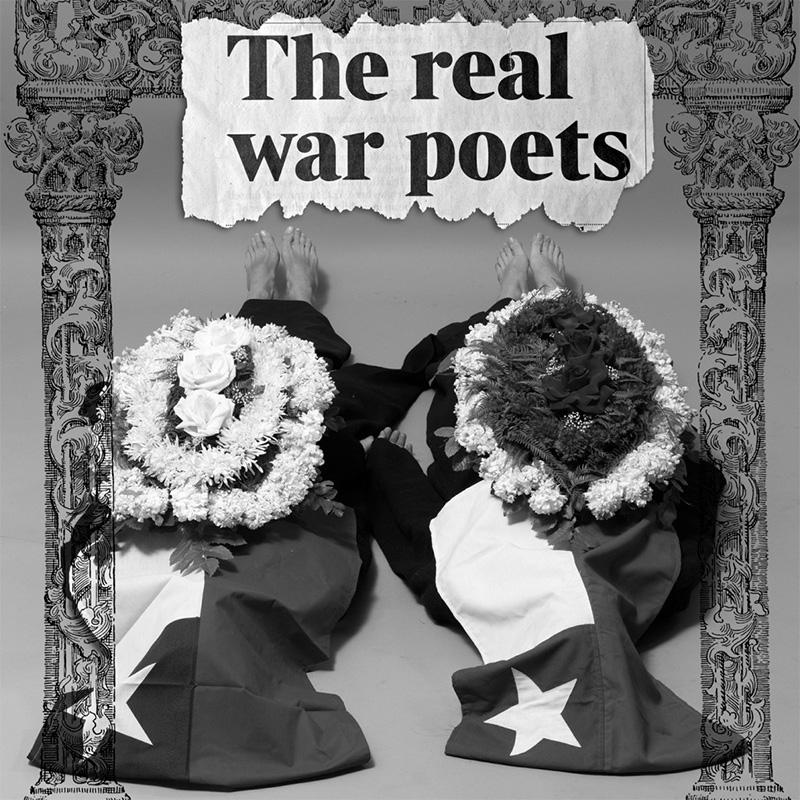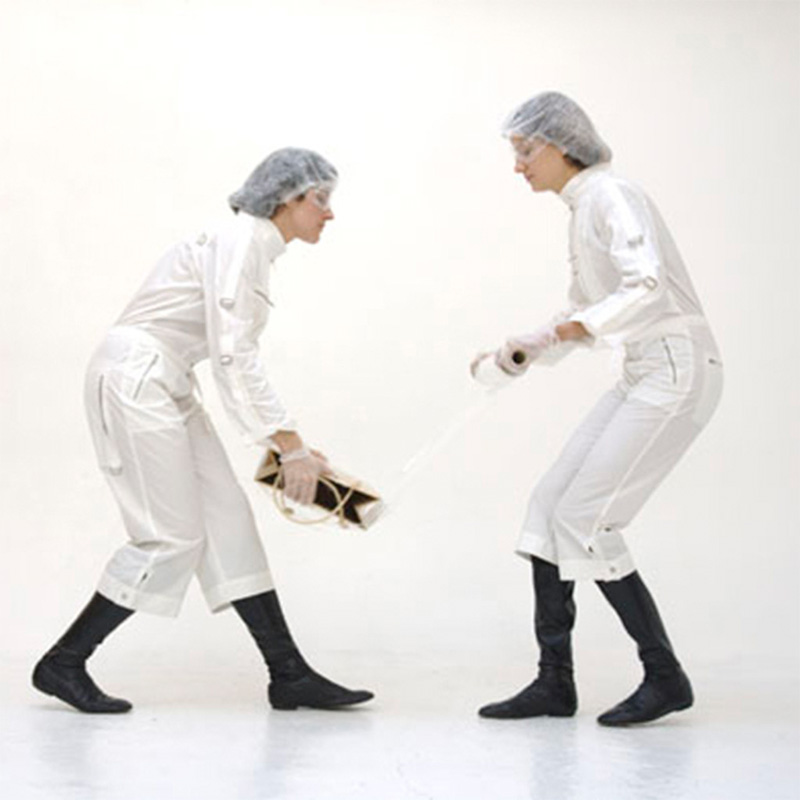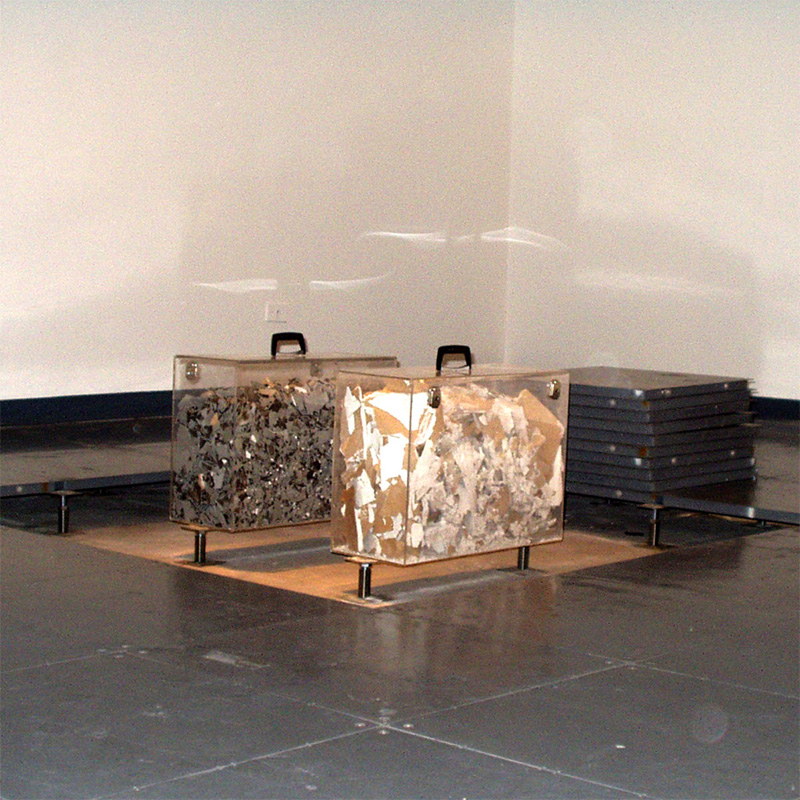NO LAND
“The Water Ceremony”
An installation that seeks to rescue an ancestral ritual of gratitude to wáter.
In many towns along the coast and mountains of western South America, between September and November, the canals are cleaned before the arrival of the rains. In each cultivated valley, the purification of the irrigation canals corresponds to a renovating cleaning and a cultural renaissance of the landscape. This is the result of the millenary design of an extensive geography of the Coast, Andes and Amazonia, which recognizes and respects the most decisive ecology for the life of the regions: the water cycle.
“The Water Ceremony” is a cultural pilgrimage event that seeks to rescue an ancestral Inca Ritual of gratitude to water as a vital element for humanity, which is moved from the sea by messengers and/or mythical and historical figures, dressed in ceremonial garments of each archaeological center from the Andes mountain range .
The main thread of the Water Ceremony is the transfer of seawater to the mountain lagoons, reconstituting its natural and cultural cycle in a celebratory context. The route crosses archeological sites, andean cities, populated centers, hamlets, communities and agricultural sites. The water is transported by messengers using ceremonial garments in cantaros and / or pumpkins, accompanied by musicians who interpret melodies along the routes.
This ceremony, which brings together diverse customs, traditions and beliefs of the Inca civilisation, highlights the innumerable ancestral chronicles and urban legends that have been transmitted from generation to generation. The principal characters of their chronicles are natural elements taking all kinds of forms, be they lagoons, forests, rivers, mountains or birds.
These five ritual investiture installation “NO LAND”, seeks to rescue ancestral rituals related to sacred places, ancestral geography and original memory. The paper pieces are constructed by intricately weaving selected pieces from pages of selected vintage atlases and cartographic documentation into robust structures. Swinburn has devoted herself to recovering books from the ruins of the publishing industry and converted them into complex raw material emerging from their disappearance as objects, initiating a regressive process that obliterates the representation of the image and the letter. Her practise is oriented towards resisting and dismantling the aims of colonial ideologies. This installation composed of books discarded from public libraries, brings us closer to the topic of cultural identity, whilst also aiming to strengthen the integration between various communities through the practice of weaving and female resilience.
Through this labour intensive technique, the material transforms from delicate pages of books to garment-like arrangements that the artist then wears as a cloak to perform in. Her works undergo an important process of both transformation and recycling. The weaving is designed with a stepped pattern inspired from the sacred ruins and old scaffold textiles used in the Andean cultures. Referring to the suyu whipala structure, each module its cut and joined together manually. This connects the ancestral knowledge and scientific thinking to the present, inventing a new poetic tie to the ecological movement.
Able to operate as both cloak and armour – depending on the viewer’s interpretation –these pieces also contain dual significance in their final form, given they were previously worn by the artist in a performance, and displayed as a sculpture or shamanic investiture after. The artworks are therefore activated by the artist’s position as both fabricator and performer of the sculpture. Each woven investiture is inspired on an specific mythological figure from the Inca civilization related to the water cycle; Cocha the Goddess of the Water, Copacati the Lake Guardian, Killa the Incan Moon Goddess. She is also known as Mama Killa, or Mother Moon. She is considered a defender of women, Coyllur the deity of light and stars, and Illapu the rain giver.


